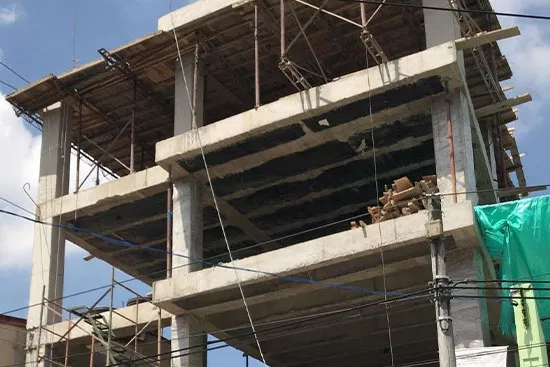Reinforced concrete pillar calculation
Need a reinforced concrete pillar calculation?
The calculation of reinforced concrete pillars is a process of design and analysis that allows to determine the necessary dimensions and reinforcements in vertical pillars that will be part of a reinforced concrete structure. Pillars are essential elements in the construction of buildings, as they are responsible for bearing the vertical loads and transmitting them to the foundations, ensuring the stability and strength of the building as a whole.
In this calculation, factors such as the loads that the pillars will have to bear (both vertical and horizontal), the height of the building, the distribution of the loads, and the strength of the steel reinforced concrete are evaluated. All of this is done to ensure that the pillars are strong and rigid enough to withstand the applied forces throughout the building’s lifespan.

Key factors in reinforced concrete pillar calculation
Load analysis
Cross-section
Reinforcement and rebar
Establish the appropriate design and distribution of steel reinforcements within the pillar to enhance its strength and load-carrying capacity.
Stability analysis
Importance of reinforced concrete pillar calculation
- Safety and Stability: Proper calculation ensures that the pillars are strong enough to withstand the loads and forces they will be subjected to throughout their lifespan. A well-designed and calculated structure provides safety for both occupants and the general public, preventing collapses or structural damage.
- Durability and Longevity: Precise pillar design ensures that the overall structure has an extended lifespan. Well-sized and reinforced pillars better resist deterioration and aging, resulting in a more durable and reliable construction.
- Compliance with Regulations: Pillar calculations must be carried out in accordance with current building codes and regulations. Compliance with these regulations ensures that the structure is safe and meets the standards set by local and national authorities.
- Efficiency and Economy: Accurate calculation avoids excessive materials and unnecessary reinforcements, leading to a more efficient and cost-effective construction. Reducing waste and optimizing design translates to significant cost savings in construction.
- Resistance to Extreme Loads: In situations with exceptional loads, such as earthquakes or strong winds, well-calculated pillars are essential for maintaining the integrity of the structure. Their adequate strength can prevent catastrophic damage to the building.
Contact us
Basic information on data protection
Responsible: Cero Metros Cuadrados, S.L.
Purposes: Manage the sending of information that you request. Sending commercial communications.
Legitimation: Consent. You can withdraw consent at any time.
Recipients: Your data will not be transferred to third parties except in case of legal obligation.
Data subject's rights: To access, oppose, rectify and have their data deleted, as well as other rights as explained in the additional information.
You can access additional and extended information at this link.

